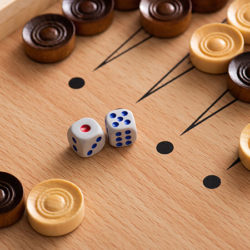
Emotions were high in Flushing Meadows when Serena Williams protested the umpire’s decisions during the 2018 US Open Finals against Naomi Osaka. It would become one of the hottest topics on social media in the days and weeks that followed, with millions of people around the world debating issues ranging from fair play, to sexism, to whether a glorious moment of victory was diminished for Osaka, or whether it had made her the most famous Grand Slam winner in quite some time.
In many places outside of the United States, it was possible to bet on this match online. In fact, most of the trading volume in tennis occurs during the match rather than before the match. Suppose you were trying to make a +EV bet while the rest of the world was caught up in the scene of Serena approaching umpire Carlos Ramos. Where do you begin?
- Some basis for evaluating the relative strengths of the players prior to the beginning of the match. A simple approximation would be to look at the closing lines of major bookmakers.
- The current state of the game: Osaka had won the first set 6-2 and was leading the second set 4-3 and due to serve next.
Some basics about US Open rules:
- A professional women’s tennis match is won by whichever player is first to win two sets.
- Each set is won by whichever player is first to win six games, provided that the margin of victory is 2 games or more. If the score of a set stands at 6-5, it can end by either going to 7-5, or if it goes to 6-6, then a tiebreaker is played.
- Each game is served by the same player throughout the entire game. Then in the next game, it becomes the opponent’s turn to serve.
- It is much easier to “hold serve,” to win a game you are serving, than it is to “break serve,” to win a game served by your opponent.
Knowing that Williams would have to win both the current and the following set in order to win the match, you could begin to map out the probabilities of events that lead to this outcome. What is the chance she wins the 3rd set? Multiply that by the chance she wins the 2nd set…which is what? From being down 3-4 in the 2nd set, she can break to get to 4-4, hold, and then break again to win it 6-4. She could also break to get to 4-4, exchange service holds, and win the set tiebreaker, etc. By coming up with estimates for each input based on historical data (and maybe some math), you can get to an approximation of her chances of winning the match.
Suppose you come up with the following:
| Williams Hold | 0.75 |
| Williams Break | 0.3 |
| Osaka Hold | 0.7 |
| Osaka Break | 0.25 |
| Williams tiebreak | 0.55 |
| Williams 3rd set | 0.6 |
As Serena’s debate with the umpire increases in intensity, your mind calmly recalls the rules of WTA tennis: The first code violation is a warning, the second code violation is a point, the third code violation is the forfeiture of a game.
A game! How much is that worth?
The qualitative answer is: “a lot” or “not that much,” depending on who you ask.
The SIG qualitative answer would be something like: “you have now surrendered all paths to victory that begin with getting to 4-4.”
Let’s go with the latter.
Recall from your table the chance of Williams breaking a game served by Osaka is 30%.
Since the chance that Williams breaks at 3-4 to get to 4-4 is 30%, each path of the match-win equity she has from the state of 4-4 must be multiplied by 0.3. For example, in the table below, WW3 means Williams holding the 9th game to go up 5-4, then breaking the 10th game to win Set 2 by 6-4, then winning the 3rd set. (0.3) * (0.75 * 0.3 * 0.6) = 0.0405
Paths to Williams victory that are conditional upon arriving at 4-4:
| Path | W(illiams) | O(saka) | W | O | T(iebreak) | 3(rd Set) | Cumulative |
| WW3 | 0.75 | 0.3 | 0.6 | 0.0405 | |||
| WOWOT3 | 0.75 | 0.7 | 0.75 | 0.7 | 0.55 | 0.6 | 0.027287 |
| OWOWT3 | 0.25 | 0.3 | 0.25 | 0.3 | 0.55 | 0.6 | 0.000557 |
| OWWW | 0.25 | 0.3 | 0.75 | 0.3 | 0.005063 | ||
| WOOWT3 | 0.75 | 0.7 | 0.25 | 0.3 | 0.55 | 0.6 | 0.003898 |
| OWWOT3 | 0.25 | 0.3 | 0.75 | 0.7 | 0.55 | 0.6 | 0.003898 |
| Total: | 0.081 |
You notice that the market has only moved 1% immediately in response to the drama. (You also don’t think that the market had been pricing in the probability of the 3rd violation earlier.) At ~8.1%, even if your rough calculation is off by half, you only need Serena to get the third code violation 1 in 4 times in order to have a profitable trade. (You also have equity in the chance she eventually gets a fourth code violation, which is forfeiture of the entire match.)
In practice, due to the time sensitive nature of this opportunity, you would probably just do WW3 in your head and decide to trade right away. “4% + a bunch of other edge > 1%.”
This is the structure and approach to the problem in any case, probably good enough to beat your friends at the lunch table (well, some lunch tables), as well as a few sportsbooks that are slower to react. The professional level secret sauce is in the precision of your input values.




Subscribe Now
Get each new post sent straight to your inbox